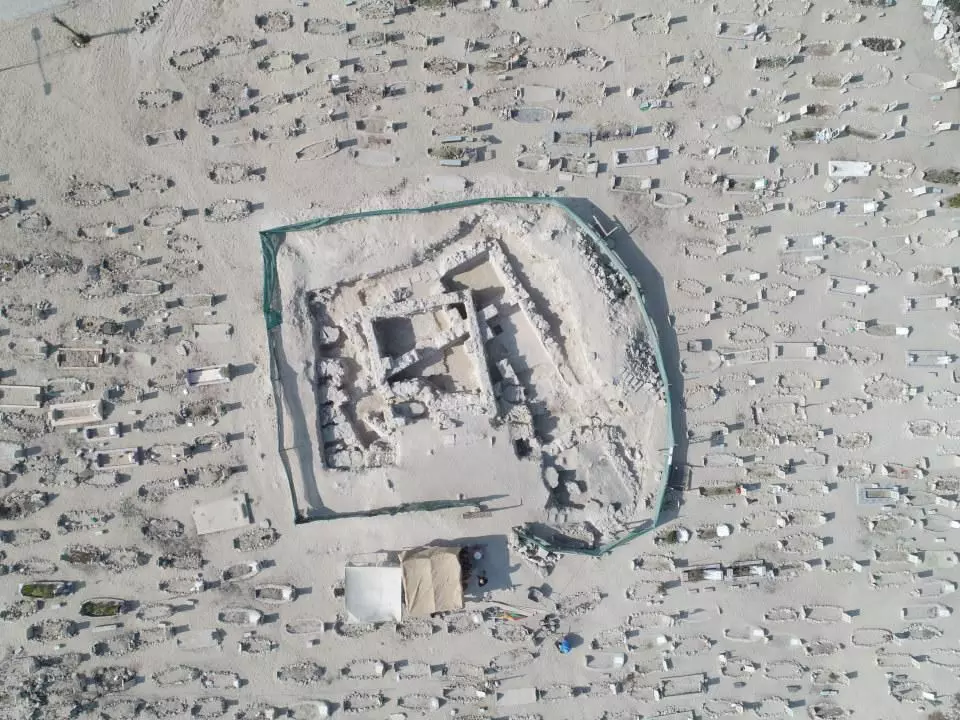Bahraini and British archaeologists have discovered one of the oldest Christian monuments in the Arabian Gulf at Samahij in Bahrain’s Muharraq province, providing the first physical evidence of an ancient Christian community in the region.
Radiocarbon dating confirms that the building was inhabited from the mid-4th century AD to the mid-8th century AD, and was likely abandoned as Islam spread. The Eastern Church, or Nestorian Church, flourished in the Gulf region until the 7th century AD.
The excavations, a collaboration between the Bahrain Authority for Culture and Antiquities and a British team led by Professor Timothy Insol and Dr Salman Al Mahri from the University of Exeter, began in 2019, with significant discoveries expected to be revealed by 2023.
Archaeologists discovered a large eight-room building, including a kitchen, dining room, workshop and living quarters, beneath a mound within the Samahij cemetery. The site may have been the residence of the bishop of the diocese, historically known as “Mishmahig” or “Mashmahig.”
Records show links between the area and central church authorities, with one bishop being deposed in 410 AD and another condemned in the mid-7th century. The site of this discovery is a modern, densely populated town, in contrast to previous discoveries in remote bay areas.
Notable artefacts include three plaster crosses, a wall carving featuring fish symbols and part of the “Chi Rho” symbol. Dr Salman Al Mahri highlighted the site’s importance to Bahrain’s history, saying it provides valuable insight into the Christian presence in the region.
“We highlight the importance of this site and the need to preserve it, highlighting its historical and archaeological value,” said Professor Tim Insol. He also noted the discovery of mother-of-pearl drawings, possibly intended for children. “This is the first physical evidence of a Nestorian church in Bahrain and gives a fascinating insight into how people lived, worked and worshipped.”

